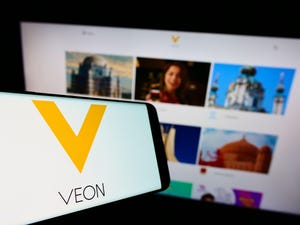Comcast gives the low-down on low-latency DOCSIS
Jason Livingood joins the podcast to discuss Comcast's low-latency DOCSIS trials, how LLD works, why the time is right for LLD and how LLD plays nice with network neutrality principles.
Low-latency DOCSIS (LLD) has been part of the CableLabs family of specs for about four years, introduced in 2019 as an annex to DOCSIS 3.1, and carried over to the emerging DOCSIS 4.0 platform.
LLD is getting ready for its close-up with word that Comcast is gearing up for field trials in the coming weeks. Apple, Nvidia and Valve are already on board to join the tests and mark traffic for low latency. Customers with certain Comcast-supplied or retail DOCSIS 3.1 gateways will also join the mix. If all goes to plan, Comcast expects to make LLD available commercially sometime later this year.
Jason Livingood, Comcast's VP of technology policy, product and standards, joined the Light Reading Podcast to provide some additional insight about the size and scope of the trial, how LLD is designed to work (and target latencies in the sub 10-millisecond neighborhood) and why LLD adheres to network neutrality principles.
By applying the Internet Engineering Task Force's Low Latency Low Loss Scalable Throughput (L4S) standard, LLD effectively creates a second network queue for low-latency and latency-sensitive traffic, as marked by the companies that run the applications and services, Livingood explained.
"Our trial is about trying that in a DOCSIS access network and, in particular, trying it on our virtual CMTS platform and seeing how that works in the last mile, and in the home network along with some application partners," he said. "Our hope is to start [the trial] sometime in July."
Livingood also explained why Comcast and others that are involved with LLD and the L4S standard believe the technology plays nice with network neutrality principles.
"I've been talking to network neutrality advocates for over a year about this, as the standard was still being discussed and finalized with the IETF," he said. "Latency and having the second queue is not the same as bandwidth or speed, and it's not the same as prioritization."
For a lightly edited transcript, click the closed caption button in the video toolbar. If you'd like to skip around and listen, here are some topics covered:
An overview of the size and scope of Comcast's low-latency DOCSIS trial (01:00)
More detail on how LLD works and how its application in the real world differs from simple ping tests (02:30)
Why now is the time for LLD to enter trials and set the stage for commercial availability (11:00)
What are the next steps as trials get underway? (13:34)
The role Wi-Fi plays in LLD (17:21)
How low-latency technologies and standards fit into Comcast's deployment of PON (19:25)
Why it's still TBD how Comcast might price or package its LLD capabilities to broadband customers (23:30)
Why low-latency capabilities are important in a "post-Gigabit" world (25:55)
Why LLD adheres to network neutrality principles (31:19)
Related posts:
— Jeff Baumgartner, Senior Editor, Light Reading
About the Author(s)
You May Also Like












